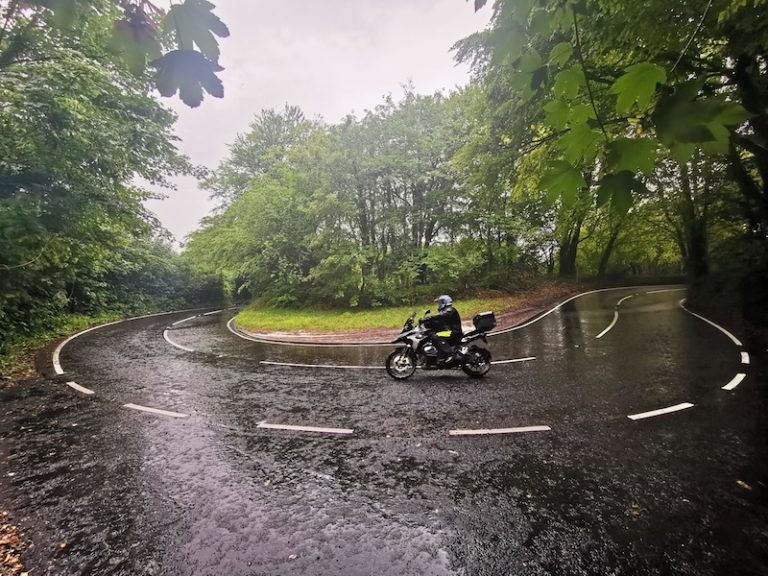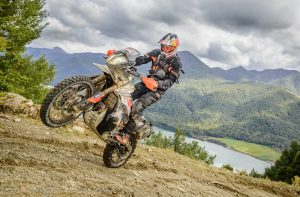Riding your motorcycle in the rain isn’t pleasant. Although, we’re heading into summer where blue skies and warm temperatures should be waiting, there’s always the chance of getting caught out. In fact, even on some of the most glorious summer tours I’ve been on, there have been days where torrential rain has been unavoidable.
With this in mind, Misti Hurst, coach at the California Superbike School and a former AMA Pro 600 racer, put together a great piece about the correct technique for riding a motorcycle in the rain. While we can’t keep you dry (for that, you’ll want to consider a laminated jacket), these tips will not only help you become a safer wet-weather rider, but you’ll also have a lot more fun.
Misti’s tips
There are four main aspects of my riding that I think about and adjust when I ride in the rain. These are braking, steering, throttle control, and body position.
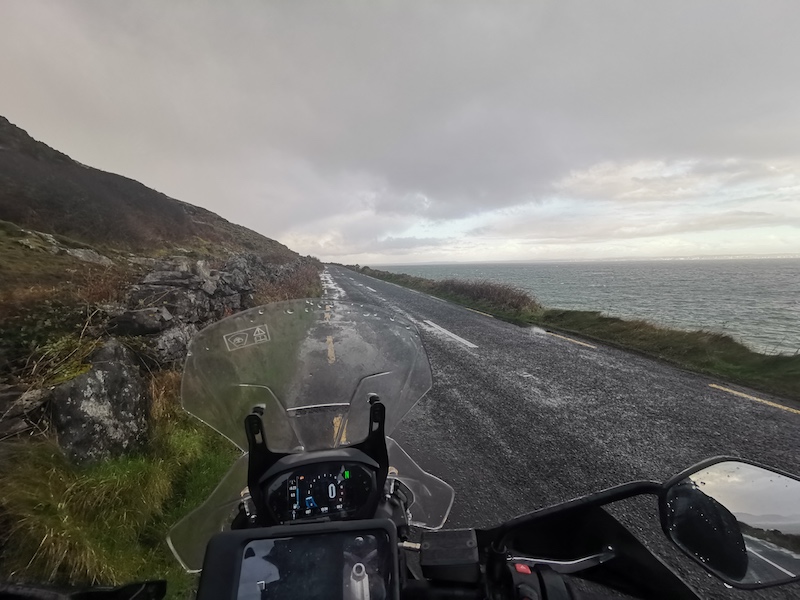
Braking
What happens when you get on the front brakes in a turn? Where does the weight transfer to? It goes to the front tyre, right? The front tyre is designed to handle only 30-40% of the cornering load.
Sometimes, you can get away with overloading it in dry conditions because of the added traction on a dry road, but try it in the wet, when there is less grip, and there could be disastrous consequences.
It only takes a tap of the front brake anytime the bike is leaned over, or even a second of holding the brakes too long while the bike is starting its lean on a wet surface for you to lose traction. When I’m riding in wet conditions, I make sure that I get all of my braking done while the bike is straight up.
It is also important to apply the brakes smoothly and consistently. You can still brake hard, but avoid any quick jabs with the lever or forceful stomps on the pedal. Gradually apply pressure and gradually release pressure.
Steering
The goal in most corners is to get the bike turned as quickly and efficiently as possible. When it comes to riding in the rain however, this is no longer true. Turn a bike too quickly and you will be grinding your visor along the pavement all too soon.
When you apply steering inputs into the bike, do it gently and consistently with even pressure and avoid jerky or overly sudden motions. Stay relaxed on the bike, especially in your arms by squeezing the tank with your legs for stability.
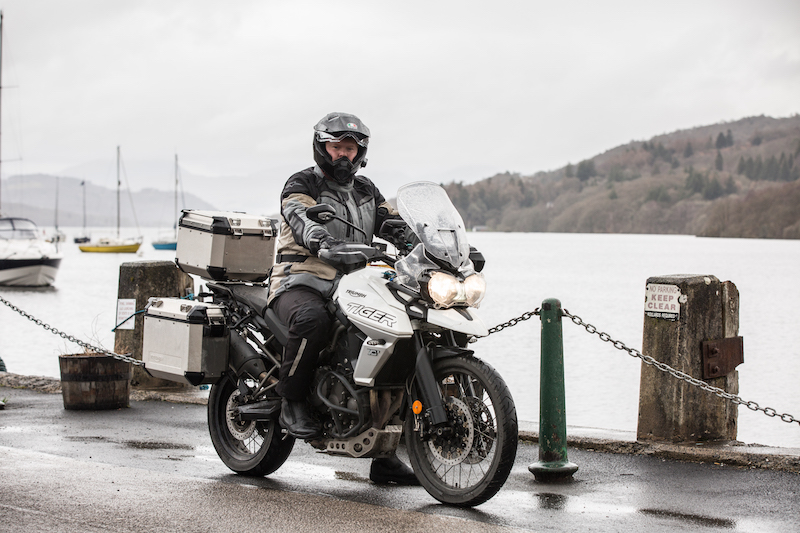
Throttle control
Now, once you’ve got the bike tipped in the corner, it becomes all about the throttle control. Your number one job in any corner is to stabilise the bike by getting on the throttle as soon as possible once the bike is turned.
Roll it on smoothly, evenly and constantly throughout the remainder of the turn. Getting on the throttle transfers weight off the front tyre and evens out the weight distribution which helps make the bike more stable.
A lot of people make the mistake of going into a turn and coasting through most of it before getting on the gas. Coasting means the weight is still pushing forward on the bike, putting added weight on the front tyre that need not be there. Coasting in the wet amplifies all of this.
If there is more weight on the front tyre, and less traction on the road, you have more chance of losing grip. So, get on the throttle as early as possible and roll it on. Again, you want to be as smooth as possible with the throttle. Don’t grab a fistful, roll on too aggressively, or roll off suddenly.
Body Position
A lot of riders tend to lean the opposite way on their bike. In a left turn, their bodies are leaning away from the corner, to the right. This often occurs because they have a fear of leaning with the bike, a misunderstanding of what that actually does to lean angle, or a combination of both factors.
When the bike leans to the left and the rider leans to the right, they are actually increasing the lean angle. Increased lean angle means that less of the tyre is touching the pavement. Less contact patch of the tyre touching the road means less traction. You want to have the most traction available to you while riding in the wet, don’t you?
Leaning with the bike will help reduce the amount of lean angle you have. By getting your body over to the side of the bike that you are turning (if bike is turning left, you let your body lean left as well) you can essentially hold the bike more upright.
Let your body go with the bike and implement control actions in a smooth and predictable way. Make these few simple changes to your riding and you can still enjoy the open road, even if it’s a little wet.
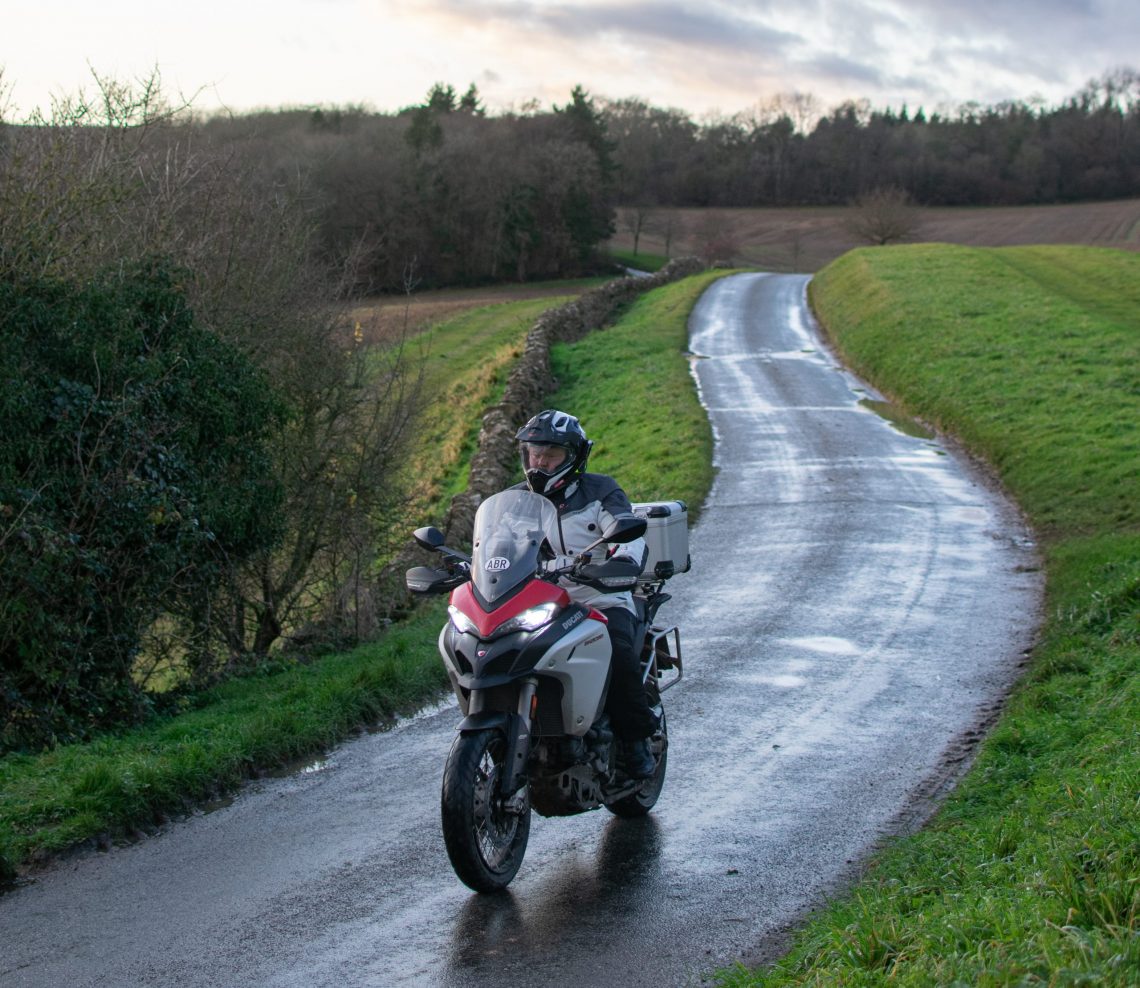
Who’s writing?
Misti Hurst is a former AMA Pro 600 road racer, coach with the California Superbike School Worldwide, mum of two kids (nine and seven) and motorcycle journalist. She lives in Vancouver, BC. Canada with her family and works hard to balance family adventures skiing, dirt biking, mountain biking and camping, with motorcycle travel adventures around the world.
Some of her favourite experiences so far have been two riding trips in Europe, track days on famous Moto GP circuits, adventure riding in Nepal and flat track training at the Texas Tornado Bootcamp. Misti’s motto is “leap and the net will appear!”
You can read about Misti’s adventures here.

